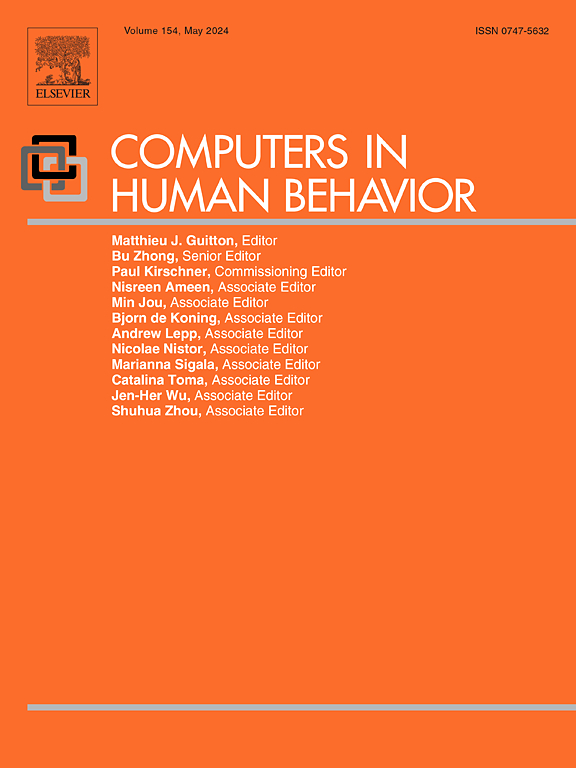Virtual or human influencers as endorsers? Behavioral and EEG evidence of how influencer type affects purchase intention of new products
IF 8.9
1区 心理学
Q1 PSYCHOLOGY, EXPERIMENTAL
引用次数: 0
Abstract
Virtual influencers are increasingly popular, drawing attention to their endorsement effectiveness. This study explores the effectiveness of virtual versus human influencers in endorsing new products, specifically Really New Products (RNPs) and Incrementally New Products (INPs) via two online and one EEG experiment. Behavioral results indicate that virtual influencers increase purchase intentions for RNPs, while human influencers do so for INPs. We propose a moderated mediation model positioning perceived risk as a mediator and new product type as a moderator. EEG data show that, at the early subconscious stage, virtual influencer endorsements (vs. human) for INPs required higher cognitive control (larger N200). At the later conscious stage, virtual influencer endorsement (vs. human) elicited lower emotional engagement (smaller P300) for INPs but higher emotional engagement (larger P300) for RNPs. A positive link between purchase intention and P300 amplitude indicates that heightened emotional engagement boosts purchase intentions. Using Construal Level Theory (CLT), we explain that virtual influencers, promoting an abstract mindset, effectively reduce perceived risk for RNPs, while human influencers, inducing a concrete mindset, lower perceived risk for INPs. This alignment of the construal levels between influencer type and product type reduces cognitive control and increases emotional engagement. CLT hasn't explained influencer type effects across product newness; this study extends CLT to virtual endorsements, confirming psychological-distance principles apply equally. These findings underscore the importance of aligning influencer type with new product type, deepening our understanding of virtual influencer endorsement and offering practical insights into their use for promoting new products.
作为代言人的虚拟或真人影响者?影响者类型如何影响新产品购买意愿的行为和脑电图证据
虚拟网红越来越受欢迎,他们的代言效果引起了人们的关注。本研究通过两个在线和一个脑电图实验,探讨了虚拟影响者与真人影响者在认可新产品方面的有效性,特别是真正的新产品(RNPs)和增量新产品(INPs)。行为结果表明,虚拟影响者会增加rnp的购买意愿,而真人影响者会增加inp的购买意愿。我们提出了一个有调节的中介模型,将感知风险定位为中介,将新产品类型定位为中介。脑电图数据显示,在早期潜意识阶段,虚拟影响者对INPs的认可(相对于人类)需要更高的认知控制(更大的N200)。在后期意识阶段,虚拟影响者背书(相对于真人)对INPs的情感投入较低(P300较小),而对rnp的情感投入较高(P300较大)。购买意愿与P300振幅之间存在正相关关系,表明情绪投入的增加促进了购买意愿。利用解释水平理论(CLT),我们解释了虚拟影响者促进抽象思维,有效降低了rnp的感知风险,而人类影响者诱导具体思维,降低了inp的感知风险。影响者类型和产品类型之间的这种解释水平的一致性减少了认知控制,增加了情感投入。CLT并没有解释影响者类型对产品新颖性的影响;本研究将CLT扩展到虚拟背书,证实心理距离原则同样适用。这些发现强调了将网红类型与新产品类型结合起来的重要性,加深了我们对虚拟网红代言的理解,并为他们在推广新产品方面的应用提供了实际的见解。
本文章由计算机程序翻译,如有差异,请以英文原文为准。
求助全文
约1分钟内获得全文
求助全文
来源期刊

Computers in Human Behavior
Multiple-
CiteScore
19.10
自引率
4.00%
发文量
381
审稿时长
40 days
期刊介绍:
Computers in Human Behavior is a scholarly journal that explores the psychological aspects of computer use. It covers original theoretical works, research reports, literature reviews, and software and book reviews. The journal examines both the use of computers in psychology, psychiatry, and related fields, and the psychological impact of computer use on individuals, groups, and society. Articles discuss topics such as professional practice, training, research, human development, learning, cognition, personality, and social interactions. It focuses on human interactions with computers, considering the computer as a medium through which human behaviors are shaped and expressed. Professionals interested in the psychological aspects of computer use will find this journal valuable, even with limited knowledge of computers.
 求助内容:
求助内容: 应助结果提醒方式:
应助结果提醒方式:


